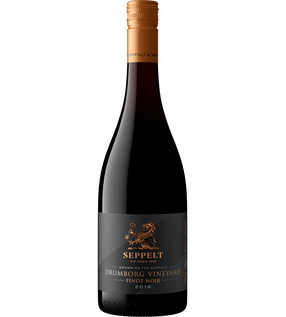
Drumborg
Directions
FIRE AND ICE
The region of Henty, in Victoria’s southwestern corner, is a unique part of the world. The Gunditjmara people knew this long before we did. They were walking this patch almost 40,000 years ago. Even as the now-dormant Budj Bim (Mount Eccles) was convulsing in a series of angry eruptions, they continued to tend their fish and eel traps between newly formed rivers of lava. It wasn’t insouciance. They could have gone anywhere, but this abundant region suited them. However, rivers of lava are one thing: the skin-piercing draughts that barrel up from the Antarctic to kiss the Victorian coastline here are another thing altogether.
Even the seasoned Gunditjmara sought refuge from the penetrating chill. They built small stone houses to protect themselves from the weather and hunkered down – their sedentary existence challenging the conventional view of hunter-gatherer nomads, and earning the Budj Bim Cultural Landscape World Heritage Listing into the bargain.
TAINTED LOVE
45 kilometres from Budj Bim, and approximately 22 kilometres from the coast, a prominent windswept hillside stoically faces the icy expanse of the Great Southern Ocean. It’s parky, but that didn’t faze the Gunditjmara – and it didn’t bother Karl Seppelt either, when in 1964, he sought to expand the family’s business.
Seppelt had carved its considerable reputation making ‘Sherries’ and ‘Ports’, which it produced at Seppeltsfield in the Barossa; and hugely popular Sparklings that emanated from its Great Western vineyards in Victoria’s Grampians. But, while Great Western was well capable of producing high-quality, long-lived dry table wines, sweet-toothed Aussie sophisticates were scarfing down untold quantities of Port and lemonade. Australia was still in the grip of its extended love affair with fortifieds, and quality table wines remained on the shelf.
KARL'S GAMBLE
Karl Seppelt – great-grandson of Joseph Ernst, and chief viticulturist for the firm – sensed change. With extraordinary prescience, and despite all market indicators to the contrary, Karl determined that the future of the Australian industry lay in high-quality, dry table wines.
With pretty much all available land at Great Western already under vine, Karl embarked on an extensive search for new dirt.
In a remote corner of southwestern Victoria, near a windswept hillside, he identified a 190-hectare property. It was completely isolated, and, with the closest vines 150 kms away across the border at Coonawarra, entirely untried for viticulture. But there was abundant rainfall, and the red-brown volcanic soil reminded him of Great Western’s celebrated Arawatta vineyard...
Karl Seppelt backed himself.
DRUMBORG'S DARLINGS
As it happens, Karl wasn’t the first person to plant vines in the region. A hundred and thirty-odd years earlier, the Henty brothers had arrived from the Old Dart (via Western Australia and Van Diemen’s Land). They brought with them merino sheep, grapevines, and high hopes. The merinos were as happy as Larry in the bracing clime, but the vines quickly turned up their toes, leaving the Henty boys to focus on their pastoral pursuits.
Seppelt's Drumborg plantings were no overnight success either. Early plantings of Ondenc – a grape that had been enormously successful at Great Western – were disappointing, but experimentation continued at the hands of stubborn and determined viticulturists. Around 40 different varieties were trialled as the growing team grappled with the challenges of soil and climate. Ultimately, Champagne’s classic early-ripening trio – Pinot Noir, Pinot Meunier and Chardonnay – emerged as Drumborg’s darlings.
Even so, costs were high, due mainly to climate and isolation, and Drumborg came under threat of closure several times in its early years – only to be saved when consecutive crackerjack vintages clearly proclaimed the area’s potential for premium cool-climate wines.
A WONDER
There’s good news and then there’s more good news. First, the good news...
Seppelt has been quietly and consummately finessing their Drumborg wines for almost 60 years now. The classic French trio is still the mainstay of the range – but there’s also a sublime, intense and long-lived Riesling in the fold. (Chief winemaker, Claire Dry unveiled the 2021 vintage recently. Reviewed by Halliday Wine Companion’s Jeni Port just 10 days after bottling, it was described as ‘scintillating... a textural, juicy, lemony-fresh, lightly spiced wonder’.) Oh yeah.
Drumborg is still isolated (although there is a small handful of other producers in the area now) and it’s always going to be brisk with those polar breezes wafting in off the ocean, so if Drummy isn’t shaping up as your ideal getaway, WineDown has more good news for you: there is NO CELLAR DOOR at Drumborg! (Seppelt's unique, historic cellar door is at Great Western). So you can be chill, not chilly, and get up close and personal with immaculate cool-climate Drumborg wines, guilt-free – online. How cool is that? Sorry!
Ok, not really sorry.
